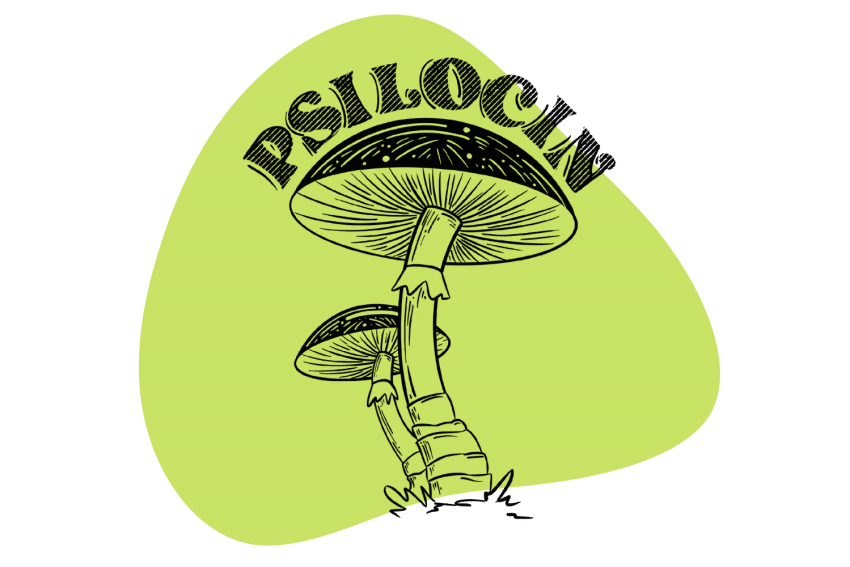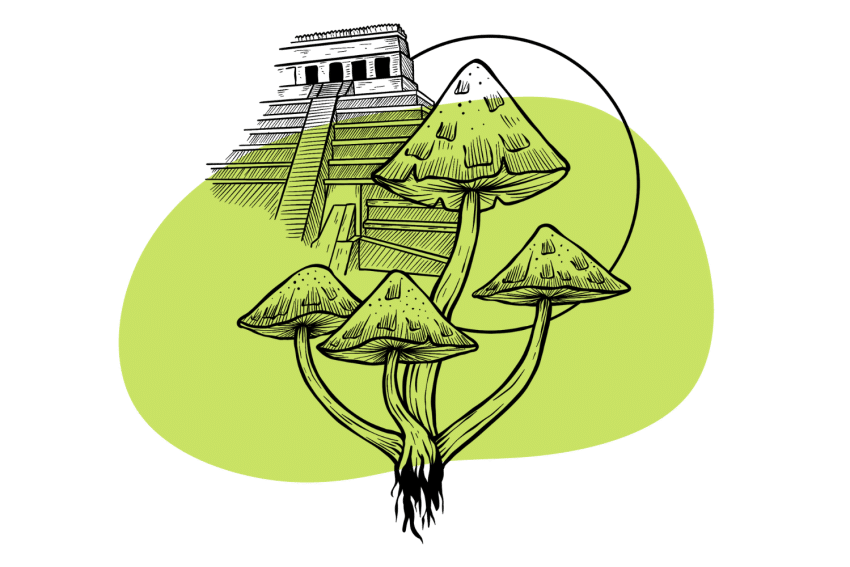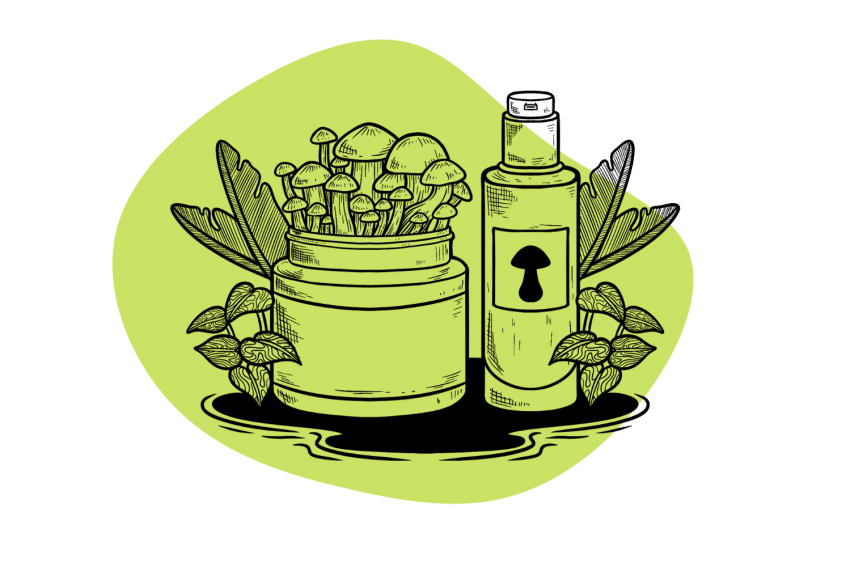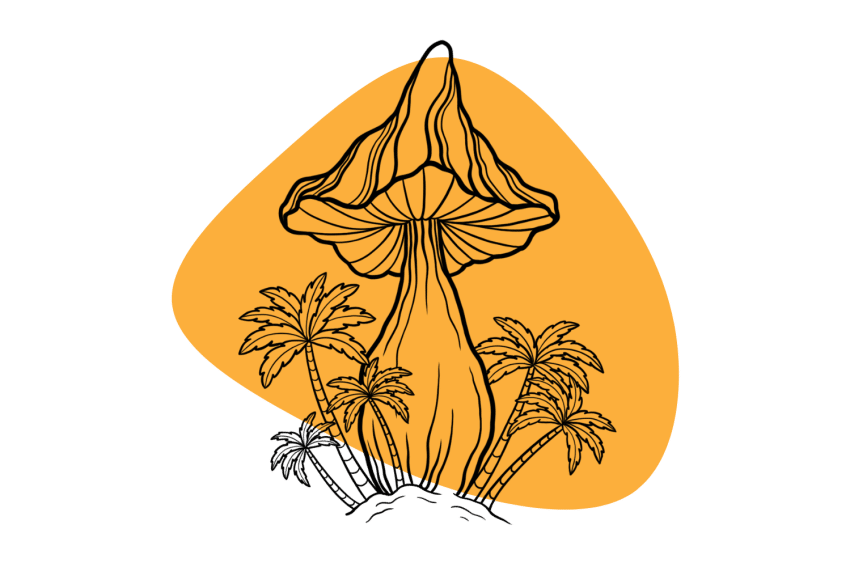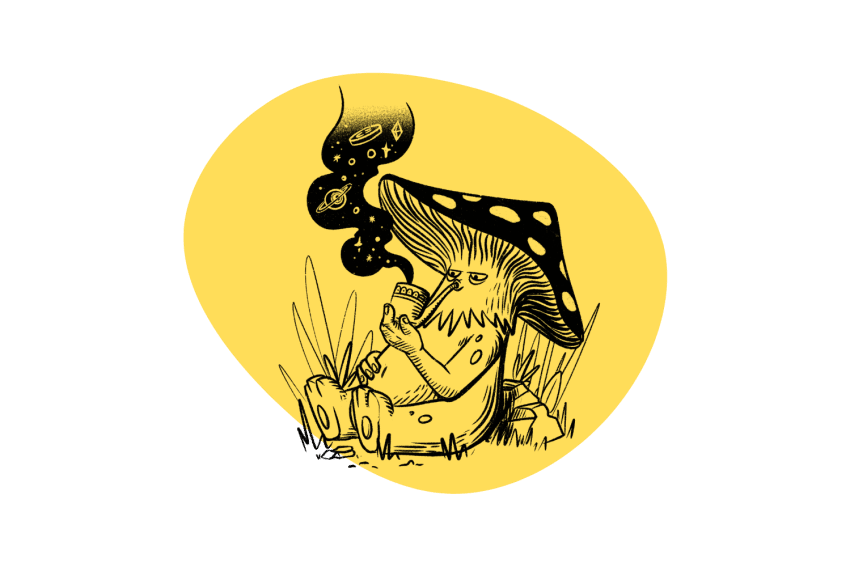List of the Easiest Mushroom Species to Grow At Home
Growing mushrooms at home isn’t as complicated as it seems. Here are 6 functional mushroom species and 4 magic mushrooms that are super easy to grow at home.
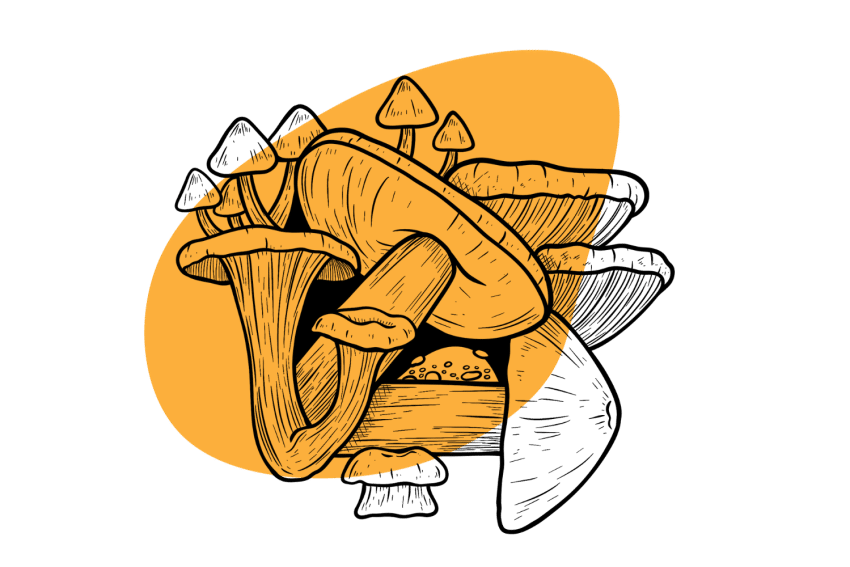
Whether you’re looking to grow edible, medicinal, or psychedelic mushrooms, home cultivation is relatively easy.
Growing mushrooms at home can be a great hobby. It’s also a way to produce food for the table, learn about fungi, and save some money.
With a few pieces of basic equipment and some general knowledge, anyone can grow mushrooms at home. That being said, some species are easier to grow than others, and some require more care and attention if you want to produce successful results.
In this article, we cover:
- The biggest difficulties of growing mushrooms at home
- The difference between indoor and outdoor cultivation
- 6 of the easiest edible mushrooms to grow at home
- 4 of the easiest psychedelic mushrooms to grow at home
Is it Difficult to Grow Mushrooms at Home?
Generally speaking, growing mushrooms at home is easy. Indoor cultivation can seem complicated when you first look into it, but the concepts are simple, and the process is easy, provided you follow the correct steps.
That being said, some mushrooms are easier to cultivate than others.
How easy or difficult growing mushrooms is depends on a few factors:
- The species you select
- Whether you grow indoors or outdoors
- Cultivation experience
- Cleanliness and sanitation
- Availability of resources
- Disease and pest control (mostly outdoors)
- Attention to detail
The Difference Between Indoor & Outdoor Cultivation
The difference between outdoor and indoor seems pretty obvious, right? — One takes place inside, the other outside. However, there are several differences between indoor and outdoor cultivation, and both methods have their pros and cons.
1. Outdoor Mushroom Cultivation
Outdoor cultivation usually utilizes vegetable beds filled with some kind of substrate or logs that have been impregnated with spores.
Outdoor mushroom cultivation is a simple process; you basically introduce spores to your yard and let nature do the rest. However, a variety of external factors can influence how successful an outdoor mushroom grow is. You’re also limited to species that can cope with the weather and climate in your region.
The benefits of outdoor cultivation include:
- Low cost
- Completely organic & natural
- Some species produce higher yields outdoors
- Limited equipment & resources required
- Continual crop year after year
- Harvest variety depending on the season
- Beneficial to the ecosystem of a garden
- Sustainable
2. Indoor Mushroom Cultivation
Indoor mushroom cultivation is a little more complicated than outdoor cultivation. Keeping everything sterile is key to a successful harvest from an indoor cultivation setup.
The substrate — be that simple grains, coco coir and vermiculite, or pasteurized manure — must be sterilized carefully before it’s inoculated with mushroom spores. If the substrate is even slightly contaminated, the bacteria can outcompete the growing mycelium and ruin the entire grow.
The benefits of indoor cultivation include:
- Year-round harvesting
- Ability to grow more species
- Higher yields
- Reduced contamination risk
- Pest and disease control
- Predictable harvests
- Convenient access
- Takes up minimal space
- Extended shelf life
6 of the Best Edible Mushrooms to Grow at Home
Functional mushrooms have been used as both food and medicine for a long time — but they’ve been making a comeback in a major way over the past couple of years.
Here are six of the easiest functional mushroom species to grow at home yourself — ensuring a consistent, long-term supply of these incredible vitality-giving mushrooms.
1. Pleurotus spp. (Oyster Mushrooms)
| Difficulty Level: | Beginner |
| Indoor or Outdoor Cultivation: | Indoor (year-round), Outdoor (year-round) |
| Yield: | High |
| Cost: | $$ |
| Spore Vendors: | North Spore, Gourmet Woodland Mushrooms |
Oyster mushrooms such as the pearl oyster and blue-gray oyster are among the most popular mushrooms to cultivate at home. They’re easy to grow in a simple indoor setup, and good yields can be produced in a relatively short time frame.
Oyster mushrooms can be grown directly from spores in mushroom grow bags. Simple sterile practice is needed when the grain is initially inoculated, but once the mycelium has formed, the rest of the process is simple.
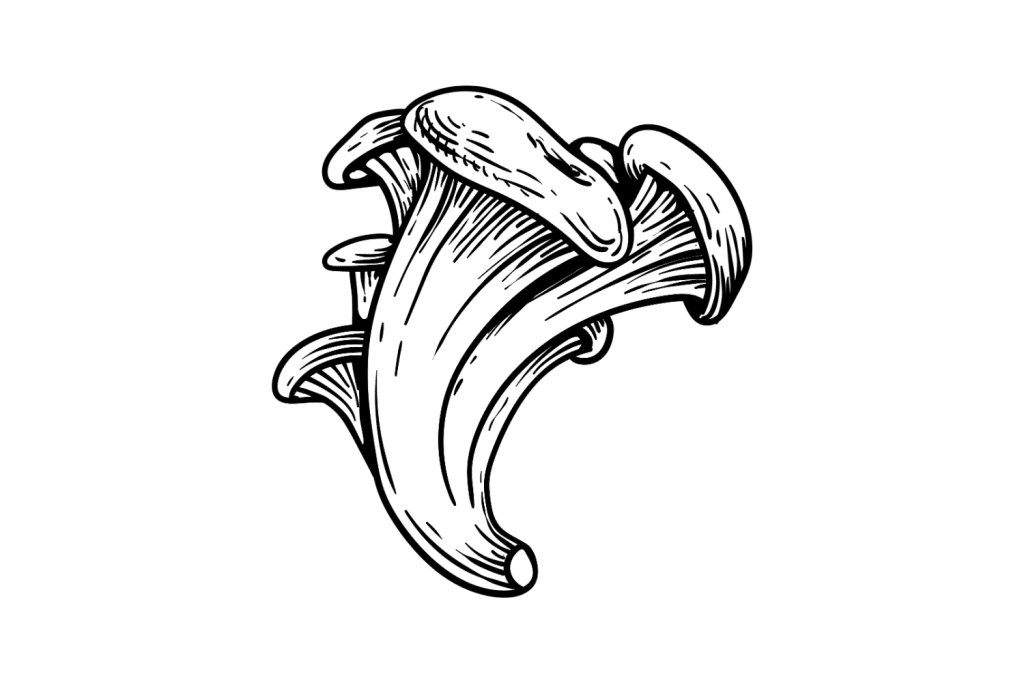
Due to the popularity of oyster mushrooms, pre-inoculated grain spawn is also available. This makes the process even easier. With grain spawn, users simply need to mix it out with sterilized substrate, fill grow bags, allow the mycelium to expand, and then cut the bags to allow the mycelium to fruit.
Oyster mushrooms can also be effectively grown outdoors in cooler climates. Simple mushroom beds can be created by adding grain spawn to an appropriate substrate. Mushrooms will then begin to appear sporadically throughout the year, unlike other seasonal species.
2. Hericium erinaceus (Lion’s Mane)
| Difficulty Level: | Beginner to Intermediate |
| Indoor or Outdoor Cultivation: | Indoor (year-round), Outdoor (seasonal) |
| Yield: | Low |
| Cost: | $$ |
| Spore Vendors: | North Spore, Gourmet Woodland Mushrooms |
Lion’s mane (Hericium erinaceus) is a peculiar-looking mushroom with long hair-like teeth rather than the traditional gills or pores found on most edible species. Lion’s mane is a tasty choice, but it’s also said to hold medicinal qualities.
When lion’s mane mushrooms are consumed, they may help promote a healthy immune system and combat dementia, as some studies suggest [1].
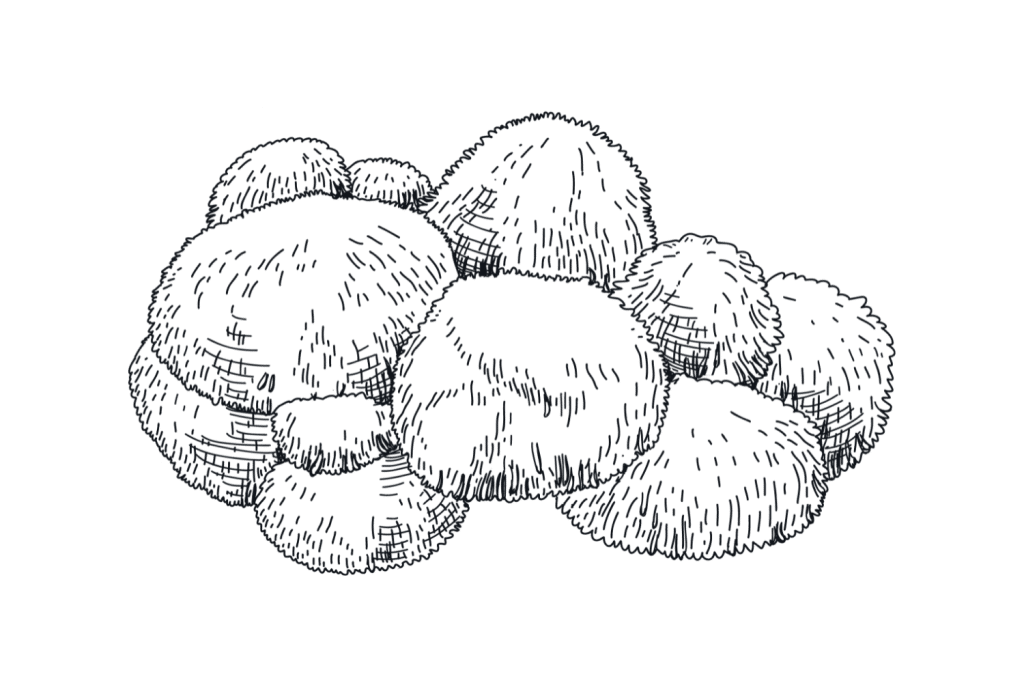
This mushroom species can be a little difficult to cultivate, but not impossible. With the right techniques, lion’s mane can be grown indoors using substrate-filled bags or outdoors on logs.
This species is slow-growing, so expect to wait several months before harvest. You can only expect a single flush from a lion’s mane grow as well, so don’t expect huge yields. However, if you have the patience, this medicinal mushroom will reward you.
3. Ganoderma spp. (Reishi Mushrooms)
| Difficulty Level: | Beginner to Intermediate |
| Indoor or Outdoor Cultivation: | Indoor (year-round), Outdoor (seasonal & difficult) |
| Yield: | Moderate |
| Cost: | $$ |
| Spore Vendors: | North Spore, Gourmet Woodland Mushrooms |
Reishi mushrooms (Ganoderma spp.) can be grown at home both indoors and outdoors. However, they require relatively specific temperature and humidity conditions — this can mean poor results outdoors, depending on the climate in your area.
These mushrooms are prized for their medicinal qualities. Reishi mushrooms may hold antioxidant, anti-inflammatory, and immune-boosting properties, as some studies suggest [2].
Reishi is fairly easy to grow indoors, although beginner cultivators with very limited experience may struggle. This species is best for someone who has grown another species or two and understands the cultivation process.

They are typically grown on hardwood substrates (sawdust or pellet) in bags or buckets. It takes several months for reishi mycelium to colonize the substrate, and the mushrooms themselves are slow-growing. They thrive at temperatures between 70-75°F (21-24°C) and require high humidity levels. These conditions must be met in an indoor cultivation setup if good yields are expected.
With all that said, this species is relatively simple to grow. However, the cultivator must be patient and able to keep a sterile environment during inoculation and incubation and a stable fruiting environment.
4. Agaricus bisporus (Button Mushrooms)
| Difficulty Level: | Beginner |
| Indoor or Outdoor Cultivation: | Indoor (year-round), Outdoor (seasonal) |
| Yield: | High |
| Cost: | $ |
| Spore Vendors: | North Spore, Mushroom Rush |
Button mushrooms (Agaricus bisporus) are the classic mushrooms you’ll find in your supermarket. These firm, spongy mushrooms are versatile and work well in many different cuisines. They are the most widely cultivated variety of mushroom, and they’re extremely easy to grow.
Ready-to-grow spawn bags are widely available from a variety of garden centers and spore vendors across the globe, and they aren’t particularly fussy about contamination or growing substrate. This is a fantastic beginner species for the complete newbie to mushroom cultivation.

The growth cycle of button mushrooms is much shorter than other “beginner” mushrooms, which also makes them appealing. Cultivators can produce these mushrooms in as little as a few weeks after inoculation. They produce consistent and predictable yields over a number of flushes and can be stored fresh for a long time.
These mushrooms won’t explode your palate with flavor, but they’re a great choice for beginners and those wishing to produce decent quantities of edible mushrooms at home.
5. Lentinula edodes (Shiitake Mushrooms)
| Difficulty Level: | Beginner |
| Indoor or Outdoor Cultivation: | Indoor (year-round), Outdoor (seasonal) |
| Yield: | Moderate to High |
| Cost: | $ |
| Spore Vendors: | North Spore, Mushroom Rush, Gourmet Woodland Mushrooms |
Shiitake mushrooms are known as “the truffles of East Asia” thanks to their rich umami flavor and pleasant texture. They grow naturally on deciduous hardwood and are relatively easy to grow indoors using bag cultivation on a sawdust or wood pellet substrate.
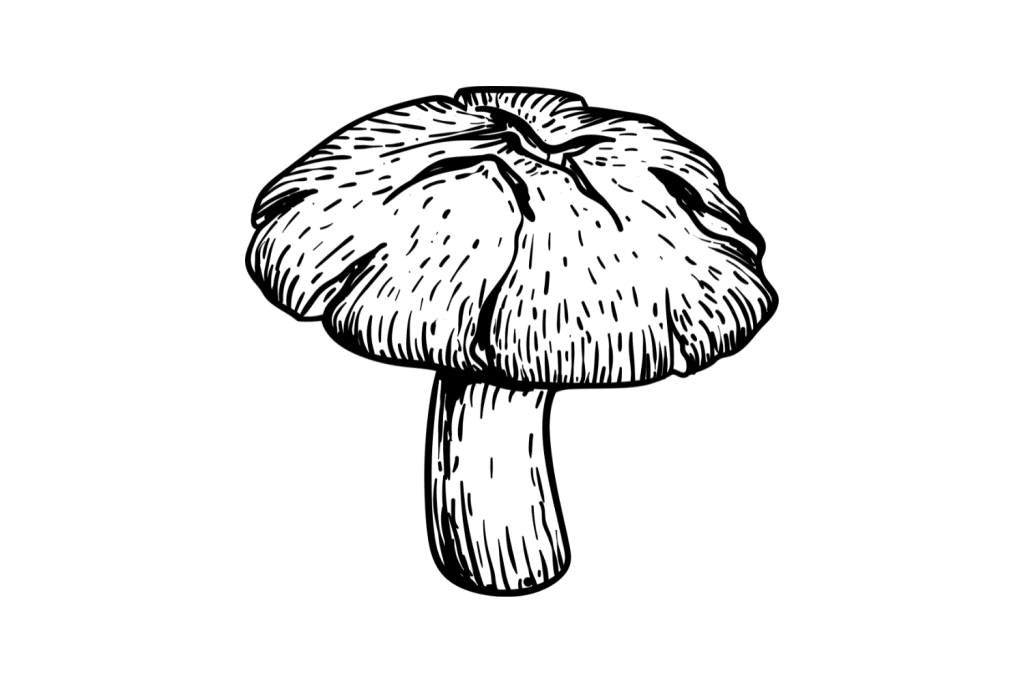
Shiitake can also be grown outdoors using traditional log cultivation techniques, provided your local climate is temperate. They’re relatively hardy and are adaptable to a range of environmental conditions, but they don’t cope well with hot, dry climates.
Good yields of Shiitake mushrooms are possible through home cultivation both indoors and outdoors. Although not as fast-growing as button or oyster mushrooms, they aren’t as slow to develop as reishi or lion’s mane.
6. Flammulina velutipes (Enoki Mushrooms)
| Difficulty Level: | Beginner |
| Indoor or Outdoor Cultivation: | Indoors (year-round), Outdoors (cooler months) |
| Yield: | Moderate |
| Cost: | $ |
| Spore Vendors: | North Spore, Mushroom Rush, Gourmet Woodland Mushrooms |
Enoki (Flammulina velutipes) is a small edible mushroom species commonly used in Asian cooking. They’re characterized by their long, thin stems and small, button-like caps.
These mushrooms are incredibly easy to grow both indoors and out. They’re often grown on hardwood blocks or in sawdust-filled mushroom bags indoors. Hardwood logs can also be inoculated for outdoor cultivation. However, the season for enoki is short — growing for a month or two during the cooler months.
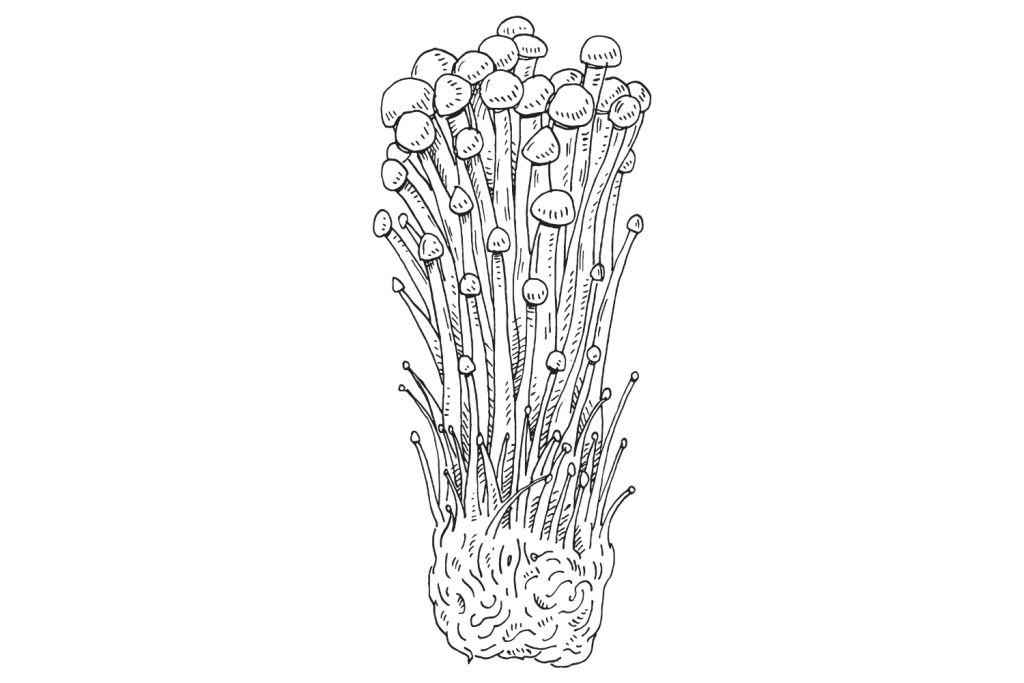
Due to their small size, yields aren’t particularly large. However, they’re prolific fruiters, and several small mushrooms can be produced over three to four flushes in a short amount of time.
Indoor cultivation is simple, but the cultivator will need to have a means of adjusting temperatures. Enoki mushrooms require a cold shock to initiate fruiting, followed by a warmer temperature for the mushrooms to grow.
4 of the Best Psychedelic Mushrooms to Grow at Home
There are well over 200 individual species of magic mushrooms — however, the vast majority of them are nearly impossible to grow at home without specialized equipment.
Most magic mushrooms people consume are either Psilocybe cubensis cultivated at home, indoors — or Psilocybe semilanceata — which can be found growing in most temperate forests around the world. Many other species of magic mushrooms can be foraged from the wild. The individual species you’re likely to find will vary depending on the time of year and the region you live.
With that aside, here are the four easiest psychedelic mushroom species to grow at home.
1. Psilocybe cubensis
| Difficulty Level: | Beginner |
| Indoor or Outdoor Cultivation: | Indoor (easy), Outdoor (challenging) |
| Yield: | High |
| Cost: | $$ |
| Spore Vendors: | Spores101, Ralphsters Spores, SporeWorks, The Magic Mushrooms Shop |
Psilocybe cubensis is the easiest psychedelic mushroom species to grow at home. This species has been cultivated for decades, and it’s a favorite among commercial and home growers who want to produce good yields of psilocybin-producing shrooms.
Although this species can be cultivated successfully outside, it’s much better suited to indoor cultivation. Beginners can use a simple technique called PF-Tek or Uncle Ben’s Tek to successfully cultivate P. cubensis mushrooms indoors.
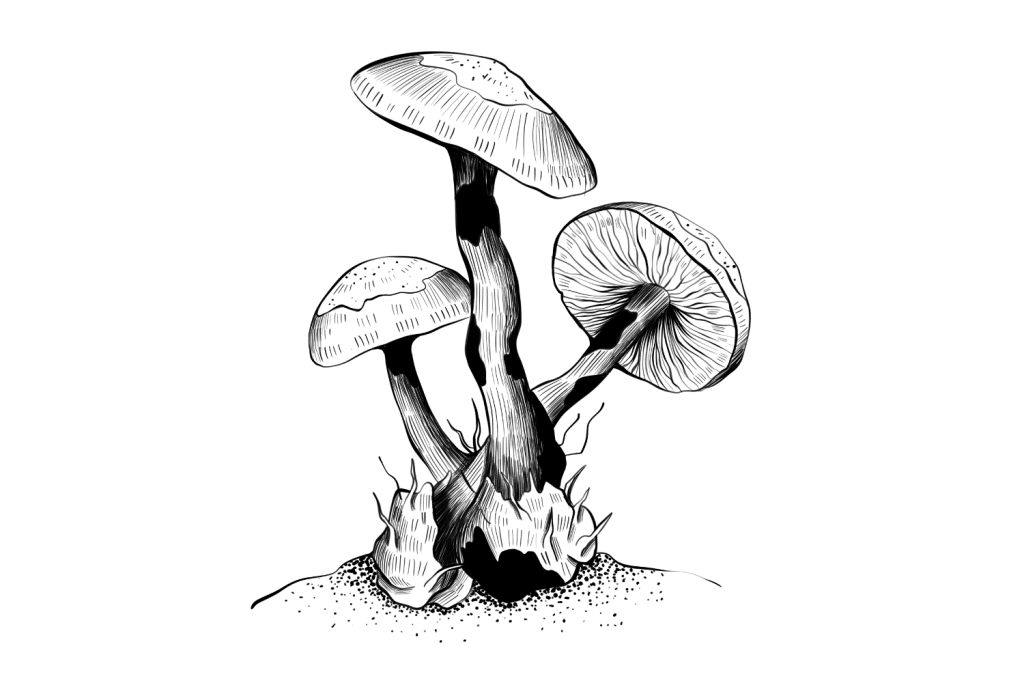
There are hundreds of different strains of Psilocybe cubensis. Some strains are more potent than others, some produce higher yields, and some are better suited to the beginner.
The easiest Psilocybe cubensis strains to grow are Golden Teacher, Koh Samui, Mexicana, or the Amazon Strain.
2. Psilocybe azurescens (Flying Saucer Mushrooms)
| Difficulty Level: | Intermediate |
| Indoor or Outdoor Cultivation: | Indoor (challenging), Outdoor (challenging) |
| Yield: | Low to Moderate |
| Cost: | $$ |
| Spore Vendors: | SporeWorks, The Magic Mushrooms Shop |
Although not as easy to cultivate as Psilocybe cubensis, P. azurescens can be cultivated at home. Psilocybe azurescens is regarded as the most potent psilocybin-producing mushroom species on the planet. However, many people avoid cultivating it and instead opt for its more forgiving cousin (P. cubensis).
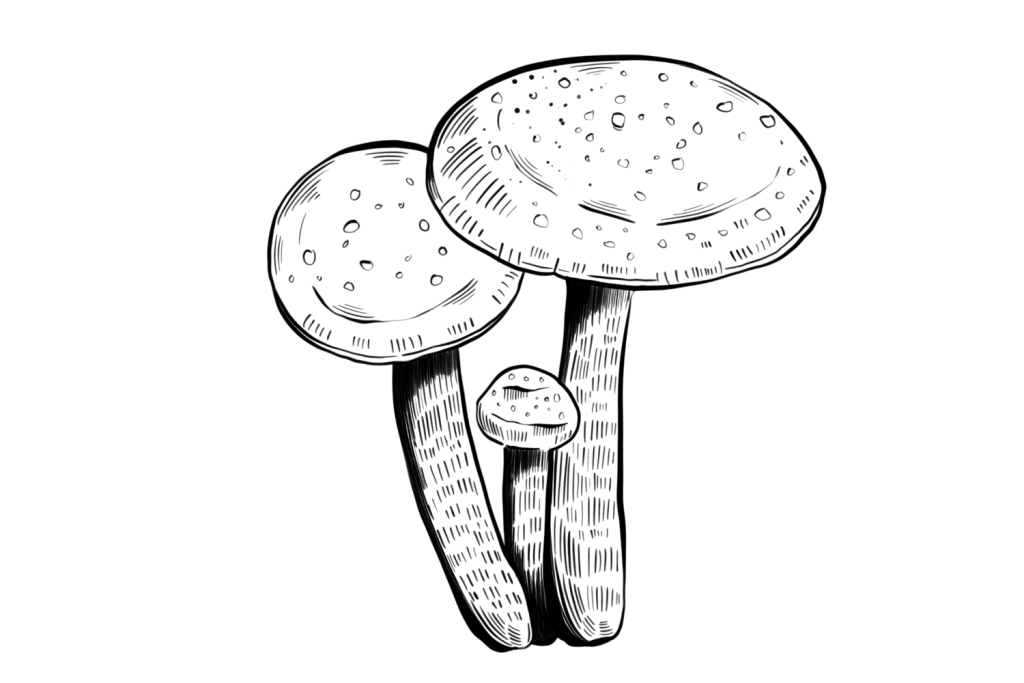
I wouldn’t recommend this species for the complete beginner, but with some knowledge of mushroom cultivation and a bit of research, these potent mushrooms can be successfully grown.
Psilocybe azurescens is a wood-loving fungus. The best results come from using deciduous woodchip, sawdust, or mulch. This species can be grown indoors and outdoors, but great care is needed throughout the cultivation process if you’re to expect good results.
3. Psilocybe cyanescens (Wavy Caps)
| Difficulty Level: | Intermediate |
| Indoor or Outdoor Cultivation: | Indoor (challenging), Outdoor (easy) |
| Yield: | High |
| Cost: | $ |
| Spore Vendors: | SporeWorks, The Magic Mushrooms Shop |
Psilocybe cyanescens — also known as Wavy Cap mushrooms — are psilocybin-producing mushrooms that thrive on wood. Although these mushrooms can be difficult to cultivate with traditional indoor techniques, outdoor cultivation can prove fruitful with some simple techniques.
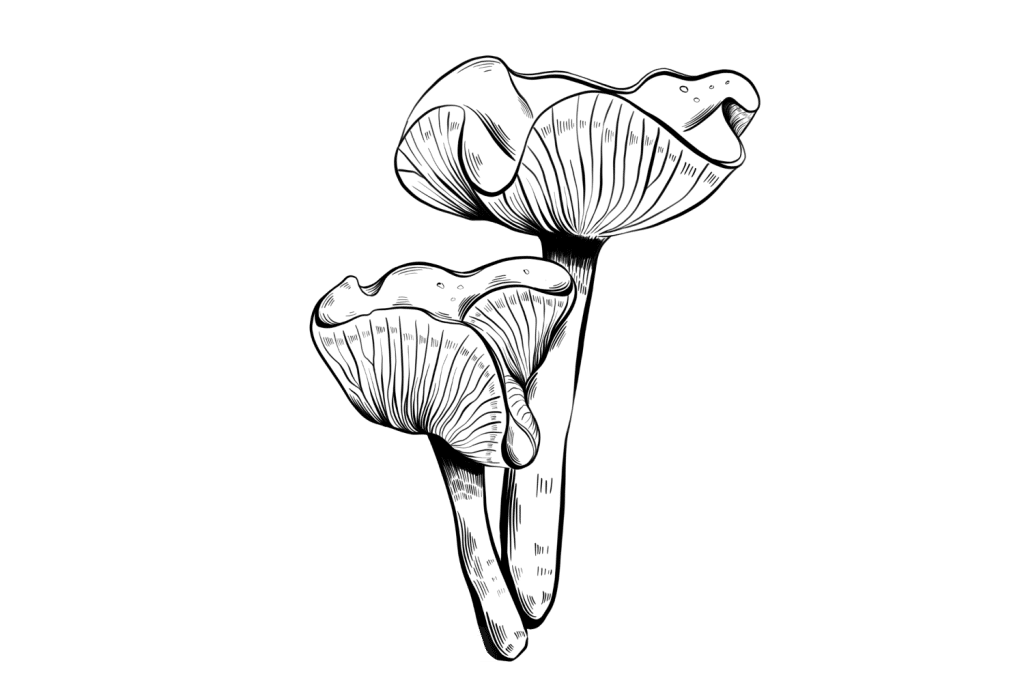
Cultivation of Psilocybe cyanescens often involves preparing a raised vegetable bed with mulch and wood chips. The bed is then inoculated and left for nature to take its course. If successful, the bed should produce dense clusters of wavy caps as the temperature begins to cool.
It’s possible to produce huge yields of Psilocybe cyanescens shrooms from a successful bed. They fruit prolifically, and several large clusters are produced quickly over many flushes. However, external factors such as weather, pests, competitive fungi, and soil quality can ruin a grow.
4. Panaeolus cyanescens (Blue Meanies)
| Difficulty Level: | Beginner to Intermediate |
| Indoor or Outdoor Cultivation: | Indoor (easy), Outdoor (challenging) |
| Yield: | Low |
| Cost: | $$ |
| Spore Vendors: | SporeWorks |
Panaeolus cyanescens — also known as Blue Meanies — is a lesser-known species of psilocybin mushroom that can be grown at home. This species isn’t as easy to cultivate as Psilocybe cubensis and shouldn’t be approached by a complete beginner. However, those who have a bit of experience should be able to cultivate it successfully.
The difficulty with cultivating this species comes mostly from the availability of spore samples. Most samples are only available as swabs or prints; this requires an extra step in the cultivation process to remove any potential contaminants.
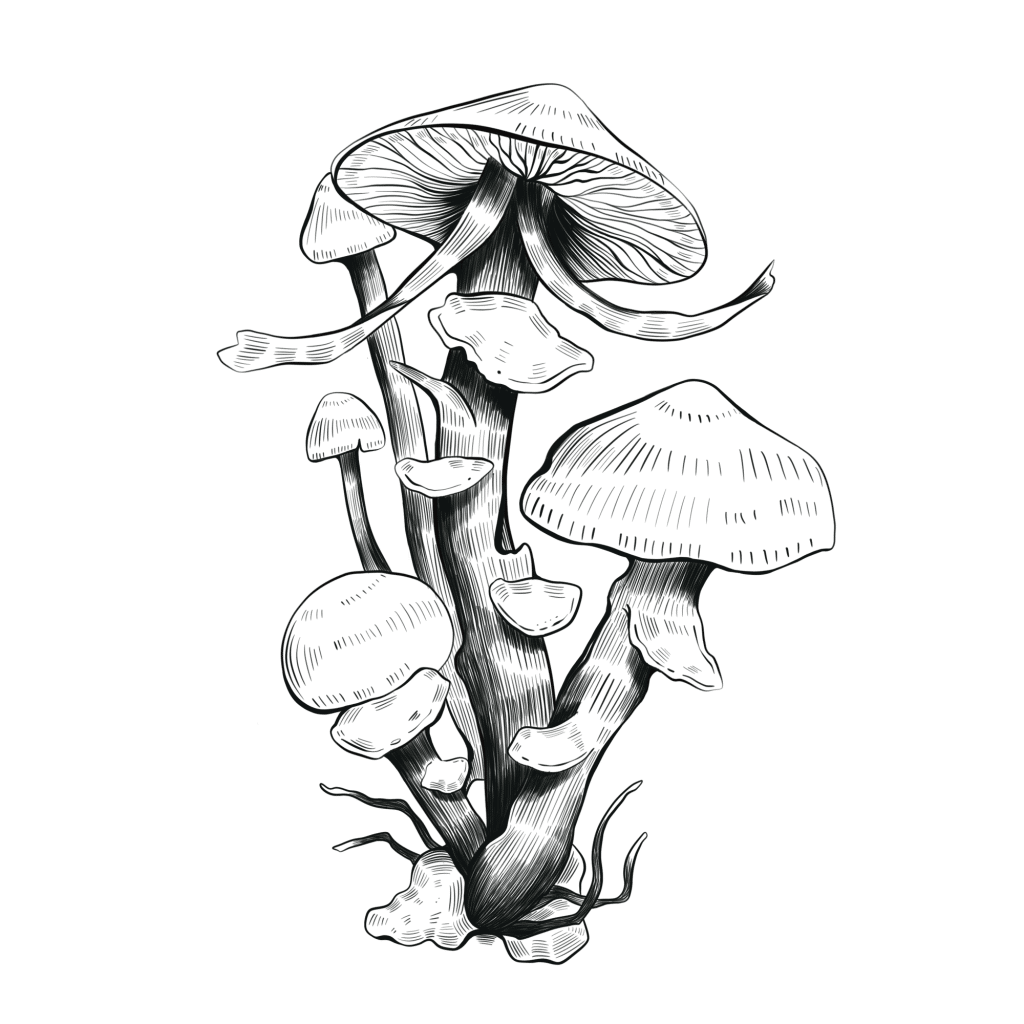
Apart from this, cultivation is relatively similar to P. cubensis. Panaeolus cyanescens grows well using PF-Tek, Uncle Ben’s Tek, and Monotub Tek.
Outdoor cultivation can be a little more difficult but not impossible. If you live in an area where similar species thrive naturally, you may be able to seed a raised bed or two with spores in your yard.
References:
- Kawagishi, H., Zhuang, C., & Shnidman, E. (2004). The anti-dementia effect of Lion’s Mane mushroom (Hericium erinaceum) and its clinical application. Townsend letter for doctors and Patients, (249), 54-57.
- Ekiz, E., Oz, E., Abd El-Aty, A. M., Proestos, C., Brennan, C., Zeng, M., … & Oz, F. (2023). Exploring the Potential Medicinal Benefits of Ganoderma lucidum: From Metabolic Disorders to Coronavirus Infections. Foods, 12(7), 1512.


